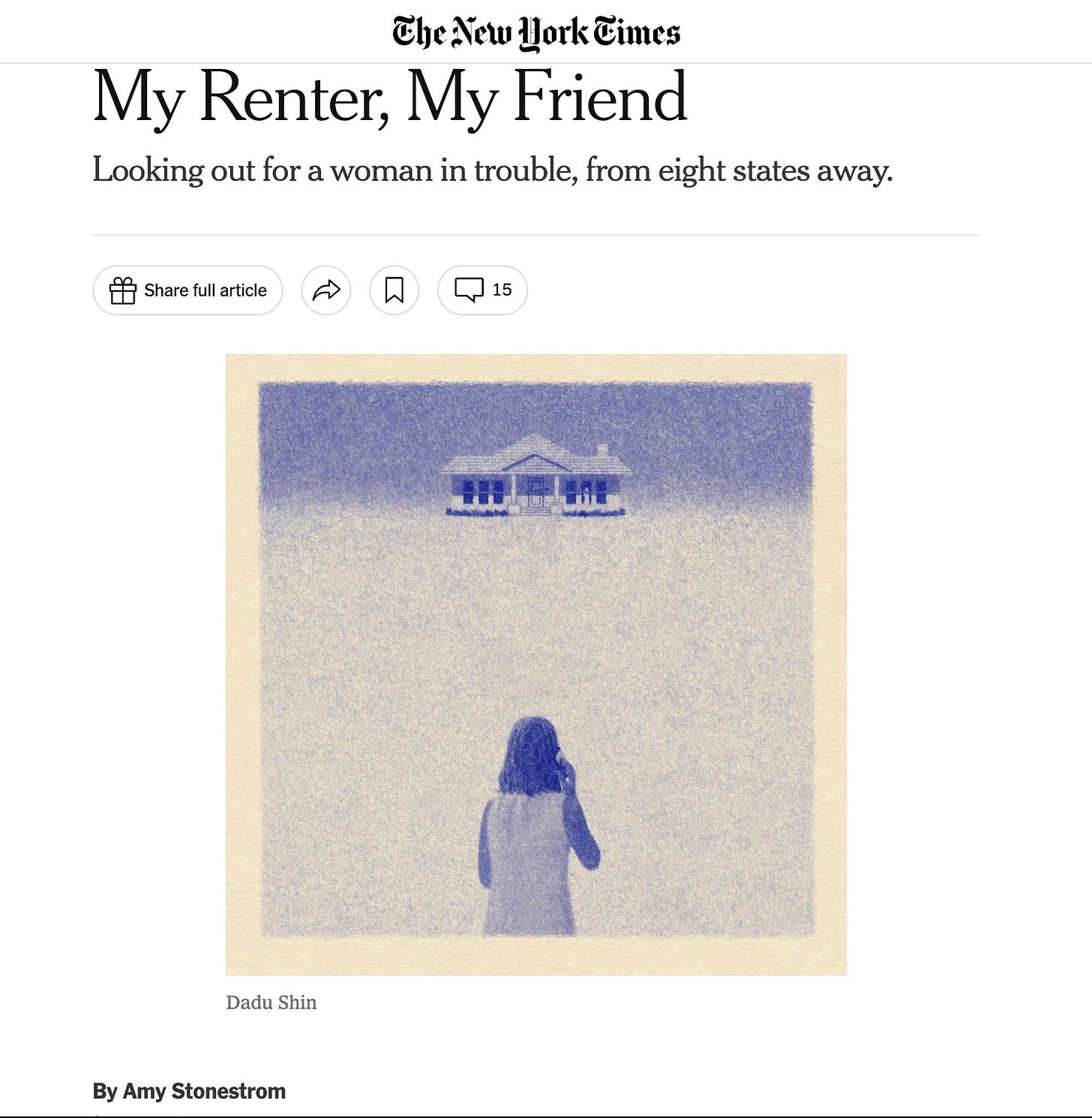The 5-Step WITD Method That Helped Get This Writer Into The NYT. She Calls It "A Total Game Changer." And You Can Use It, Too.
Creative work is sacred, vulnerable, and alive. It does not grow in the harsh soil of other people’s undisciplined opinions. I teach a better way, and you can use it, too.
Upcoming WITD Events
Live Workshop: I’m teaching a guest workshop with
’s beautiful Sustenance community tomorrow, Thursday, Sept 5 at 7 PM CENTRAL: How to Stir Emotion: Advanced Techniques for Making Readers Feel (adapted from my sold-out Feeling of What Happens June workshop.) Joy has 4 guest spots available for this private event. Check it out here if you’re interested!The Letter Reimagined: Starts September 25! If you’re a paid member, you’re all set to participate in this intensive for pushing the boundaries on epistolary writing. If not, you can upgrade anytime. ❤️
orig. pub June 20241
Good morning, WITDers,
I was thrilled recently to get pinged on social media by the writer Amy Stonestrom, whose powerful personal essay was published in The New York Times—and who says she used “Jeannine Ouellette’s workshopping method” to help make it happen.
Here’s exactly what Amy said:
Over the past six years or so I've been lucky enough to find writing communities both online and in person … Each group works a little differently but in several of them we’ve started to use Jeannine Ouellette's workshopping method which I highly recommend. It's a terrific way to get out of your head and see if things are resonating or making sense. It’s been a total game changer.
In this post, I share a gift link to Amy’s NYT essay along with my detailed, step-by-step craft essay on the exact workshopping method I use and teach—and that Amy’s writing groups are now using, and that you can use for yourself, on your own or with a group.
That Amy called this method “Jeannine' Ouellette’s workshopping method” when she tagged me really made my day. She didn’t have to do that. I’d never have known that her writing groups were using my workshopping method (which I have openly shared and am sharing again in this post). But I loved that she tagged me. It was ethical, generous, and kind.
Also, wise.
After all, the writing world is small. I have always found it works best when we err as far as we possibly can toward generosity and the ethics of credit where it’s due. To note: Amy’s tagging me inspired another summer post on literary citizenship, karma, and why we really should credit each other (hint: it’s not about legalities).
Simply being an aspiring writer (or an avid reader) does not automatically prepare someone to get under the surface of someone else’s manuscript, let alone help identify how to solve any problems and meaningfully improve the work.
So, back to the WITD workshopping method. It’s based on attention, close reading, and curiosity, much in the vein of narrative medicine, and I developed it personally over several years after founding my Writing in the Dark synchronous workshop on Zoom (through which dozens and dozens of pieces have been gone on to be published in esteemed journals and many of those have won nominations and awards—check out our big, beautiful Born in WITD directory of published work here.
My method can be your method, too, if you wish to write as a pathway to attention and discovery, not recitation. If you want to write to unearth what you don’t know instead of telling us what already think you know. This method is deeply real, deeply embodied, deeply attentive, and profoundly respectful.
Ultimately, this method is how we write in the dark.
When you read the steps of the WITD workshop method, it’s important to also know the spirit that guides it. Because writing in the dark is more than writing—it’s writing as a way of being in the world, a way of making our lives “particular and real,” a way of paying attention to cross through portals into new dimensions where the world really does “offer itself to our imaginations” and open itself into metaphor and meaning beyond our wildest dreams.2
To write in the dark is to let language become unfamiliar and even strange again, as it was when we were children, so that we can see the world and ourselves anew.
To “write in the dark”3 means embracing playfulness as a “portal to the profound,”4 and adopting John Keats’s invitation into Negative Capability, which means becoming more “capable of being in uncertainties, Mysteries, doubts, without any irritable reaching after fact and reason.”
To write in the dark together is to collectively strive to get as close up to the words—and to the world—as we can, which in turn allows us to get closer up to ourselves and each other.
With that in mind, here’s a gift link to Amy’s New York Times essay and the detailed, 5-step Writing in the Dark workshopping method you can use on your own or with a group to make your writing more alive, more true, more effective, more affecting, and, if you aspire to publish, more publishable.
This method can get you there. It already has for hundreds of other writers.
Below the paywall is:
A gift link to the NYT essay that Amy Stonestrom revised using the WITD workshopping method
A craft essay about the WITD method and a detailed explanation of how to use the method itself.





